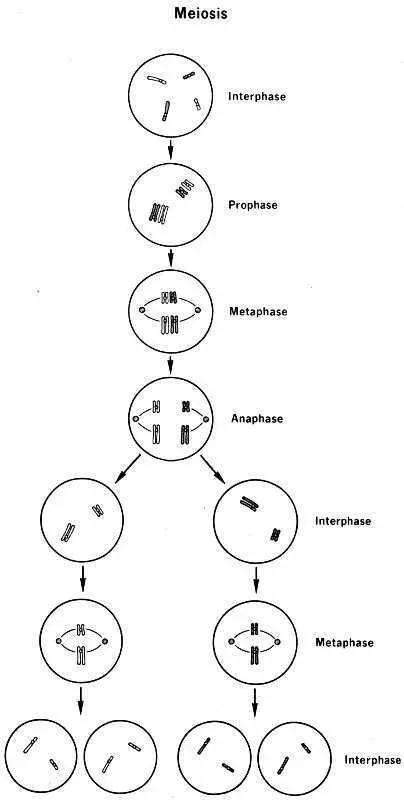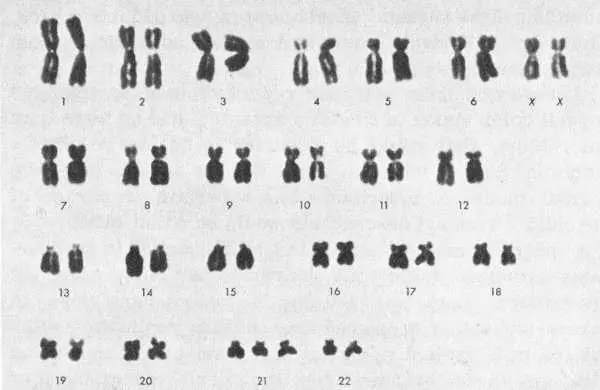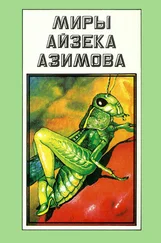Айзек Азимов - The Genetic Effects of Radiation
Здесь есть возможность читать онлайн «Айзек Азимов - The Genetic Effects of Radiation» весь текст электронной книги совершенно бесплатно (целиком полную версию без сокращений). В некоторых случаях можно слушать аудио, скачать через торрент в формате fb2 и присутствует краткое содержание. Год выпуска: 2018, Издательство: epubBooks Classics, Жанр: Медицина, Биология, на английском языке. Описание произведения, (предисловие) а так же отзывы посетителей доступны на портале библиотеки ЛибКат.
- Название:The Genetic Effects of Radiation
- Автор:
- Издательство:epubBooks Classics
- Жанр:
- Год:2018
- ISBN:нет данных
- Рейтинг книги:4 / 5. Голосов: 1
-
Избранное:Добавить в избранное
- Отзывы:
-
Ваша оценка:
- 80
- 1
- 2
- 3
- 4
- 5
The Genetic Effects of Radiation: краткое содержание, описание и аннотация
Предлагаем к чтению аннотацию, описание, краткое содержание или предисловие (зависит от того, что написал сам автор книги «The Genetic Effects of Radiation»). Если вы не нашли необходимую информацию о книге — напишите в комментариях, мы постараемся отыскать её.
The Genetic Effects of Radiation — читать онлайн бесплатно полную книгу (весь текст) целиком
Ниже представлен текст книги, разбитый по страницам. Система сохранения места последней прочитанной страницы, позволяет с удобством читать онлайн бесплатно книгу «The Genetic Effects of Radiation», без необходимости каждый раз заново искать на чём Вы остановились. Поставьте закладку, и сможете в любой момент перейти на страницу, на которой закончили чтение.
Интервал:
Закладка:
It is this that begins to explain the endless variety among living beings, even within a particular species.
It only begins to explain it, because there are other sources of difference, too. A chromosome is capable of exchanging pieces with its pair, producing chromosomes with a brand new pattern of gene varieties. Before such a crossover , one chromosome may have carried a gene for blue eyes and one for wavy hair, while the other chromosome may have carried a gene for brown eyes and one for straight hair. After the crossover, one would carry genes for blue eyes and straight hair, the other for brown eyes and wavy hair.

Meiosis. Diagram depicting Interphase, Prophase, Metaphase, Anaphase, Interphase, Metaphase, Interphase
Part 2:
Mutations
Sudden Change
Shifts in chromosome combinations, with or without crossovers, can produce unique organisms with characteristics not quite like any organism that appeared in the past nor likely to appear in the reasonable future. They may even produce novelties in individual characteristics since genes can affect one another, and a gene surrounded by unusual neighbors can produce unexpected effects.
Matters can go further still, however, in the direction of novelty. It is possible for chromosomes to undergo more serious changes, either structural or chemical, so that entirely new characteristics are produced that might not otherwise exist. Such changes are called mutations .
We must be careful how we use this term. A child may possess some characteristics not present in either parent through the mere shuffling of chromosomes and not through mutation.
Suppose, for instance, that a man is heterozygous to eye color, carrying one gene for brown eyes and one for blue eyes. His eyes would, of course, be brown since the gene for brown eyes is dominant over that for blue. Half the sperm cells he produces would carry a single gene for brown eyes in its half set of chromosomes. The other half would carry a single gene for blue eyes. If his wife were similarly heterozygous (and therefore also had brown eyes), half her egg cells would carry the gene for brown eyes and half the gene for blue.
It might follow in this marriage, then, that a sperm carrying the gene for blue eyes might fertilize an egg carrying the gene for blue eyes. The child would then be homozygous, with two genes for blue eyes, and he would definitely be blue–eyed. In this way, two brown–eyed parents might have a blue–eyed child and this would not be a mutation. If the parents’ ancestry were traced further back, blue–eyed individuals would undoubtedly be found on both sides of the family tree.
If, however, there were no record of, say, anything but normal color vision in a child’s ancestry, and he were born color–blind, that could be assumed to be the result of a mutation. Such a mutation could then be passed on by the normal modes of inheritance and a certain proportion of the child’s eventual descendants would be color–blind.
A mutation may be associated with changes in chromosome structure sufficiently drastic to be visible under the microscope. Such chromosome mutations can arise in several ways. Chromosomes may undergo replication without the cell itself dividing. In that way, cells can develop with two, three, or four times the normal complement of chromosomes, and organisms made up of cells displaying such polyploidy can be markedly different from the norm. This situation is found chiefly among plants and among some groups of invertebrates. It does not usually occur in mammals, and when it does it leads to quick death.
Less extreme changes take place, too, as when a particular chromosome breaks and fails to reunite, or when several break and then reunite incorrectly. Under such conditions, the mechanism by which chromosomes are distributed among the daughter cells is not likely to work correctly. Sex cells may then be produced with a piece of chromosome (or a whole one) missing, or with an extra piece (or whole chromosome) present.
In 1959, such a situation was found to exist in the case of persons suffering from a long–known disease called Down’s syndrome. [2] This is more commonly known as “Mongolism” or “Mongolian idiocy” though it has nothing to do with the Mongolian people.
Each person so afflicted has 47 chromosomes in place of the normal 46. It turned out that the 21st pair of chromosomes (using a convention whereby the chromosome pairs are numbered in order of decreasing size) consists of three individuals rather than two. The existence of this chromosome abnormality clearly demonstrated what had previously been strongly suspected—that Down’s syndrome originates as a mutation and is inborn (see the figure on the next page).

Karyotype of a female patient with Down’s syndrome (Mongolism). During meiosis both chromosomes No. 21 of the mother, instead of just one, went to the ovum. Fertilization added the father’s chromosome, which made three Nos. 21 instead of the normal pair. (Compare with the normal karyotype on page 4.)
Most mutations, however, are not associated with any noticeable change in chromosome structure. There are, instead, more subtle changes in the chemical structure of the genes that make up the chromosome. Then we have gene mutations .
The process by which a gene produces its own replica is complicated and, while it rarely goes wrong, it does misfire on occasion. Then, too, even when a gene molecule is replicated perfectly, it may undergo change afterward through the action upon it of some chemical or other environmental influence. In either case, a new variety of a particular gene is produced and, if present in a sex cell, it may be passed on to descendants through an indefinite number of generations.
Of course, chromosome or gene mutations may take place in ordinary cells rather than in sex cells. Such changes in ordinary cells are somatic mutations . When mutated body cells divide, new cells with changed characteristics are produced. These changes may be trivial, or they may be serious. It is often suggested, for instance, that cancer may result from a somatic mutation in which certain cells lose the capacity to regulate their growth properly. Since somatic mutations do not involve the sex cells, they are confined to the individual and are not passed on to the offspring.
Spontaneous Mutations
Mutations that take place in the ordinary course of nature, without man’s interference, are spontaneous mutations . Most of these arise out of the very nature of the complicated mechanism of gene replication. Copies of genes are formed out of a large number of small units that must be lined up in just the right pattern to form one particular gene and no other.
Ideally, matters are so arranged within the cell that the necessary changes giving rise to the desired pattern are just those that have a maximum probability. Other changes are less likely to happen but are not absolutely excluded. Sometimes through the accidental jostling of molecules a wrong turn may be taken, and the result is a spontaneous mutation.
We might consider a mutation to be either “good” or “bad” in the sense that any change that helps a creature live more easily and comfortably is good and that the reverse is bad.
It seems reasonable that random changes in the gene pattern are almost sure to be bad. Consider that any creature, including man, is the product of millions of years of evolution. In every generation those individuals with a gene pattern that fit them better for their environment won out over those with less effective patterns—won out in the race for food, for mates, and for safety. The “more fit” had more offspring and crowded out the “less fit”.
Читать дальшеИнтервал:
Закладка:
Похожие книги на «The Genetic Effects of Radiation»
Представляем Вашему вниманию похожие книги на «The Genetic Effects of Radiation» списком для выбора. Мы отобрали схожую по названию и смыслу литературу в надежде предоставить читателям больше вариантов отыскать новые, интересные, ещё непрочитанные произведения.
Обсуждение, отзывы о книге «The Genetic Effects of Radiation» и просто собственные мнения читателей. Оставьте ваши комментарии, напишите, что Вы думаете о произведении, его смысле или главных героях. Укажите что конкретно понравилось, а что нет, и почему Вы так считаете.








![Айзек Азимов - Земля Ханаанская. Родина иудаизма и христианства[The Land of Canaan]](/books/172206/ajzek-azimov-zemlya-hanaanskaya-rodina-iudaizma-i-h-thumb.webp)



